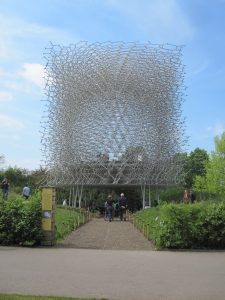Not really something I want to write about but something which has to be recorded.
Possibly the worst year I can remember in the last 40.
Having started with 9 colonies I managed to get a reasonable crop from the oil-seed-rape but from this point it all went down-hill.
The weather turned cold and wet throughout the spring and the bees were confined to their hives for long periods. The result was overcrowding and a strong swarming urge. This couldn’t be quelled by adding supers or replacing comb with foundation so it became a continual battle to prevent swarming. This was exacerbated by a period of bad health (mine) which prevented me from doing brood inspections. The result was a massive loss of bees in swarms and a line of hives with virgin queens. The bad weather meant that the queens were unable to fly for weeks and having failed to do so for nearly a month, became barren. This resulted in them becoming drone-layers and the colony gradually dwindling away.
The summary of my losses were
Drone Layers 10
Regicide 3
Mating Flight Loss 7
In a drone-laying situation, you cannot do a paper unite as the colony, to all intent and purposes, has a viable queen and unless and until she is removed she cannot be put together with a colony which has a viable queen. Finding a small virgin queen to remove can be done but it does involve a high level of luck. The only answer is to simply shake out the colony, remove the hive and leave the workers to seek refuge in another hive; again and again.
Then disease struck. I was having to shovel up heaps of dead bees beneath the hive entrances and it was spreading along the hives. Unable to diagnose the problem I called in a seasonal inspector and between us we came to the decision that it could only Chronic Bee Paralysis Virus on a grand scale and for which there was no cure. With existing colonies dwindling down to a few frames of bees I united the two larger ones to make one viable colony and took it to an out-apiary over at Cutler’s Green to get them away from the infection.
The home apiary now looks a poor shadow of its former self.

The out-apiary at Cutler’s Green was boosted with two ‘cut-outs’. A neighbouring farmer had two old rotten hives sitting on a field headland which had been populated by a swarm and a cast. He wanted them removed so I duly obliged hoping they were in fact swarms from my own hives. No such luck, as I could tell from their personality that they weren’t from my well behaved colonies. They were however bees and I wasn't going to look a gift-horse in the mouth. Having got them on the borage at Cutler’s Green they soon settled down and started producing brood.

The borage was a god-send as it may-have-well just saved my honey harvest.



